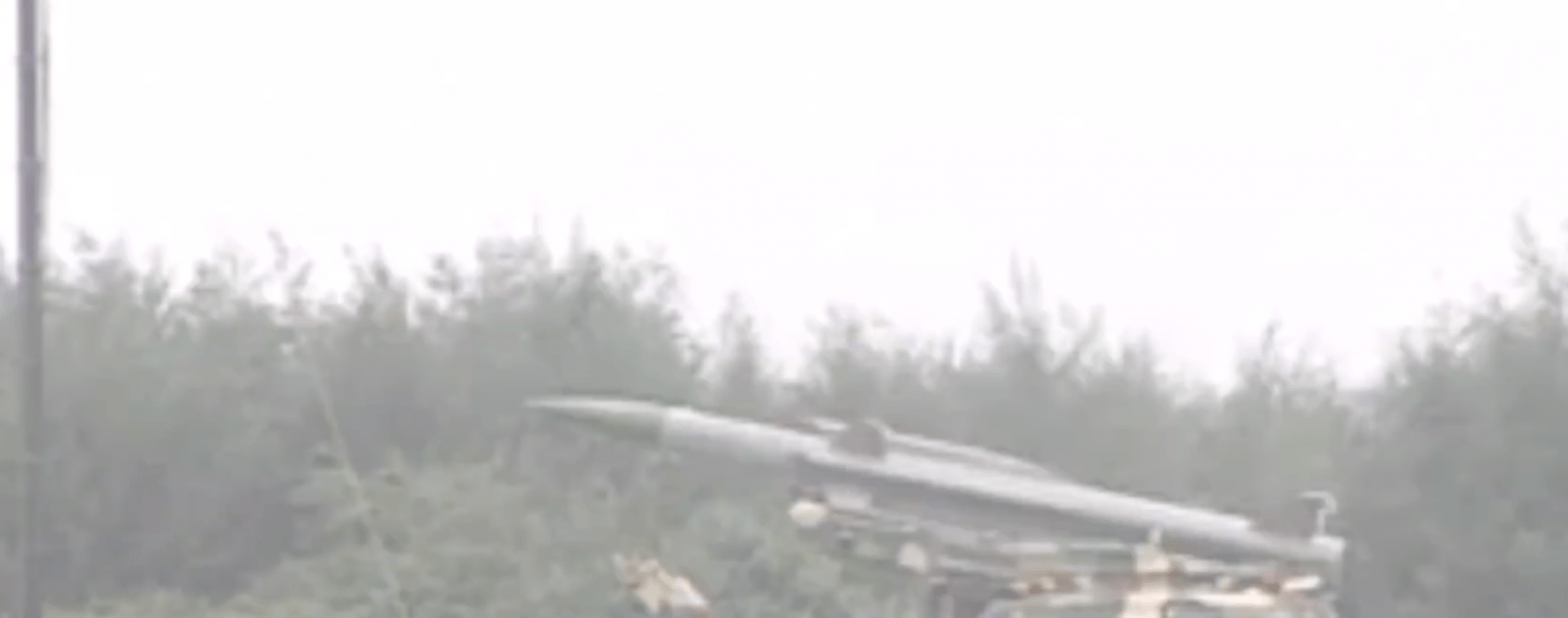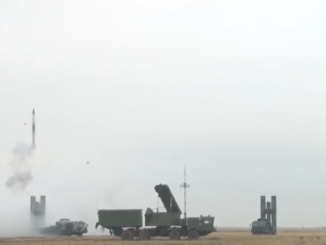 Strategic stability in South Asia has remained fragile due to different variables. Three basic threats to strategic stability in South Asia have been perceived as crisis instabilities, arms race and escalation risks between two nuclear foes, India and Pakistan. Security specialists have deduced that the rise of security trilemmas (among China-India-Pakistan) represent a genuine test to South Asia’s strategic stability as well as to the deterrence equilibrium. The development of advanced conventional and nuclear weapons system with a high level of readiness and precision strike capabilities and supersonic and hypersonic missiles with the capability to destroy adversary’s strategic weapon system is highly destabilizing for the region. India is chipping away at it’s Ballistic Rocket Defense (BMD) System and has been seeking it since the 1990s. The India-US nuclear agreement of 2005 was the real achievement for India to satisfy its goal, as the nuclear arrangement enabled the US to give nuclear-related offices that India would use for peaceful purposes as well as to satisfy its nuclear methodology objectives of operationalization of a nuclear triad; and effective induction of a BMD system. The Indian Ministry of Defense additionally uncovered that “India has crossed an important milestone in building its overall capability towards enhanced security against incoming ballistic missile threats. ”
Strategic stability in South Asia has remained fragile due to different variables. Three basic threats to strategic stability in South Asia have been perceived as crisis instabilities, arms race and escalation risks between two nuclear foes, India and Pakistan. Security specialists have deduced that the rise of security trilemmas (among China-India-Pakistan) represent a genuine test to South Asia’s strategic stability as well as to the deterrence equilibrium. The development of advanced conventional and nuclear weapons system with a high level of readiness and precision strike capabilities and supersonic and hypersonic missiles with the capability to destroy adversary’s strategic weapon system is highly destabilizing for the region. India is chipping away at it’s Ballistic Rocket Defense (BMD) System and has been seeking it since the 1990s. The India-US nuclear agreement of 2005 was the real achievement for India to satisfy its goal, as the nuclear arrangement enabled the US to give nuclear-related offices that India would use for peaceful purposes as well as to satisfy its nuclear methodology objectives of operationalization of a nuclear triad; and effective induction of a BMD system. The Indian Ministry of Defense additionally uncovered that “India has crossed an important milestone in building its overall capability towards enhanced security against incoming ballistic missile threats. ”
In any case, India’s BMD is particularly making Pakistan uneasy. Meanwhile, both South Asian nuclear foes are presenting hostile and protective weapons and are occupied with improving the reach and innovative complexity of their arsenals.
Since India’s first BMD test in 2006, India has completed ten tests, three of which have been a failure. In both February and March of 2017, India tried a high interceptor rocket intended to upgrade the “kill” likelihood of incoming ballistic missiles both inside (endo) and outside (exo) the earth’s atmosphere. India accepts that this could improve its security by guarding its significant cities. Whereas Islamabad accepts that India’s deployment of the BMD may give India a false sense of security and is counter-productive for South Asian stability.
India’s advancement of BMD forces is causing a strategic flux that tributes to an “unending arms race” in the South Asian region— it impacts the credibility of the Pakistani deterrence dimension. India is chipping away at the improvement of a two-tiered missile defence shield to protect real cities. The main level is the Prithvi Air Defense (Cushion), capable of tending to high-elevation threats. The second is the Advanced Air Defense (AAD) capable of tending to low-elevation threats. Furthermore, India has managed to get an S-400 Air Defense Missile System worth $5.2 billion from Russia.
India is without a doubt looking for a viable and far-reaching shield against Pakistani and Chinese missile advancement to protect its key cities and hindrance forces from being pre-empted. Moreover, India’s justification for the BMD depends on different components including security, eminence, power projection and to satisfy its geostrategic and geopolitical objectives in the region. With the fruitful induction of its BMD system, India will be the fifth nation to have an operationalized BMD system.
Firstly, there is a contention that an Indian defence shield could protect India and its deterrent forces from an unauthorized terrorist attack, to a greater extent saw to occur from Pakistan or perhaps from China. For instance, South Asian nuclear expert, Rajesh Basrur contends that the deployment of India’s BMD shield could lessen these vulnerabilities, if not totally dispense with them. Pakistan contends that its nuclear equipment is in safe hands and its command-and-control system is robust, centralized, and effective [1]as recognized by the international community. That being stated, there is no such probability that a terrorist could use missiles against India while on Pakistani soil.
Secondly, defenders of the BMD system would contend that sending BMD forces could empower India to diminish its hostile hindrance forces and advance the arms control process between the two nuclear adversaries. For instance, President Reagan anticipated that the U.S. advancement of its BMD system could pave the way for arms control measures to eliminate the weapons themselves.
Thirdly, advocates of India’s deployment of BMD firmly accept that it would make motivating forces for strategic stability and counter-proliferation of ballistic missiles in South Asia, and it will lessen the creation of ballistic missiles in the Asian region. Obviously, Pakistan is worried that the deployment of BMD could raise Indian trust in its ability to strike first with the conviction that it could protect itself.
The induction of the Ballistic Missile Defense System in South Asia will destabilize the strategic stability of the locale for the accompanying noteworthy reasons:
First, operationalization of the BMD system will neutralize Pakistan’s ballistic rocket ability and propel to develop progressively deadly warheads. Second, it will urge the state to launch the first strike. Third, it will build difficulty in security and energize the arms race, since operationalization and induction of BMD system will compel Pakistan to make quantitative and qualitative enhancements in its own missile inventories to guarantee its security.
Induction of the BMD system in South Asia will drive Pakistan to expand the readiness and exactness of strike capacity, increment the ranges and payloads of its missile system, and accordingly escalate the arms race and increment the delicacy of strategic stability among the nations that rely upon nuclear deterrence to look after peace. Eventually, to counter India’s vulnerability to Pakistan’s nuclear weapons, the main path is to quantitatively and qualitatively increment Pakistan’s strategic weapons. And it is critical to take note that Pakistan isn’t looking for parity with India yet, just keeping up the balance of power.
Pakistan’s MIRV capable Ababeel and Babur-III are seen as logical reactions to guarantee strategic stability. Ababeel is a surface-to-surface ballistic missile capable of conveying numerous warheads with a scope of 2200 km, utilizing Different Autonomously Targetable Re-entry Vehicle (MIRV) innovation. Additionally, Pakistan accomplished second-strike capacity with the effective trial of Babur-III. It is a nuclear-capable SLCM with the scope of 450 km and has the proficiency to dodge the radars and defence systems of the enemy.
This is sufficient proof that Pakistan has the capacity to maintain the credibility of its technique of nuclear deterrence against the ballistic missile defences because of its capability to deliver numerous warheads. In this way, Babur-III SLCM and MIRV capable Ababeel are logical augmentations that can neutralize the Indian BMD system.
Nevertheless, Pakistan would need to develop a BMD system to protect significant cities, especially after India intends to go for MIRV innovation and expand the ranges of SLBM for counterforce targeting pretensions. Pakistan may have different alternatives for transforming its ballistic missiles into MIRV innovation if and when necessary. The prime candidates are the Shaheen-II and Shaheen-III missiles, given their payload limit. Expanding warheads mounted on a MIRV would upgrade their credibility enough to crush the foe’s defence shield, regardless of how devastating the shield might be.
In the light of the above facts, it is derived that because of the changing regional security situation, induction of modern weapons and uncertain disputes, the peace in South Asian security condition has stayed delicate. India’s BMD can irritate deterrence harmony. Wherein, only policy option for Pakistan is quantitative and qualitative developments in its nuclear weapons and missile program to maintain strategic stability and make certain the credibility of its nuclear deterrence.
![]()




Be the first to comment